Sarah L. Johnson's Blog, page 89
June 23, 2015
Hot topics and themes in historical fiction - with recommended titles
This will be a shortish post, as I'll be heading out soon to the Historical Novel Society's 6th North American conference, which is in Denver this coming weekend. I'll be speaking on a panel, "The Art of Book Cover Design for Historical Fiction," on Saturday afternoon, and have been practicing the presentation in my office today to make sure that it's timed appropriately. There are five of us speaking, so we have about seven minutes apiece. I think I'm good to go.
It's actually been a busy summer presentation-wise, since last Tuesday evening I gave an introductory workshop on historical fiction for my university's Academy of Lifelong Learning, which provides continuing education for adults in the local community. There were 24 people signed up – a larger crowd than expected. It was great to see so much interest in the topic. The attendees had some good questions at the end, about trends, anachronisms, subgenres, and so forth.
One of the handouts I gave the audience was a guide to current trends in historical fiction, with a list of titles and descriptions. Since I promised to make it publicly available, it's linked above as a pdf. There are plenty of titles I didn't include, since I wanted to keep it to a reasonable length... but if you have favorite titles on trendy topics you'd like to recommend, please leave them in the comments.
For those readers and authors who'll be at the conference, I look forward to seeing you there!
It's actually been a busy summer presentation-wise, since last Tuesday evening I gave an introductory workshop on historical fiction for my university's Academy of Lifelong Learning, which provides continuing education for adults in the local community. There were 24 people signed up – a larger crowd than expected. It was great to see so much interest in the topic. The attendees had some good questions at the end, about trends, anachronisms, subgenres, and so forth.
One of the handouts I gave the audience was a guide to current trends in historical fiction, with a list of titles and descriptions. Since I promised to make it publicly available, it's linked above as a pdf. There are plenty of titles I didn't include, since I wanted to keep it to a reasonable length... but if you have favorite titles on trendy topics you'd like to recommend, please leave them in the comments.
For those readers and authors who'll be at the conference, I look forward to seeing you there!
Published on June 23, 2015 19:18
June 19, 2015
New & upcoming historical novels by authors previously reviewed here
I always look forward to new novels by authors whose earlier books I've read and enjoyed. For my newest gallery of upcoming titles, here are 10 historical novels set to appear over the next year, with details.
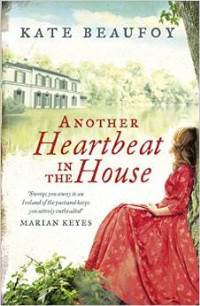
Secrets from a century ago are uncovered when a woman travels to Ireland, to go through the things her late uncle left behind in his lakeside cottage, and finds a manuscript written by a woman named Eliza Drury. The author's previous novel, Liberty Silk , was a multi-generational novel written with both style and warmth. Transworld Ireland, July.
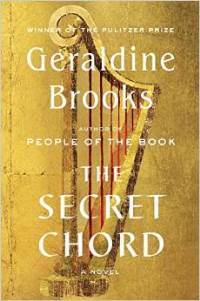
After hearing Geraldine Brooks speak with the Washington Post's "totally hip book reviewer" Ron Charles at BEA, I've been eager to read her upcoming novel, focusing on the life of King David. An ARC appeared in my mail yesterday, and I'll be reading it shortly. I had reviewed her previous novel Caleb's Crossing for the Globe & Mail and reposted it here shortly thereafter. Viking, October.
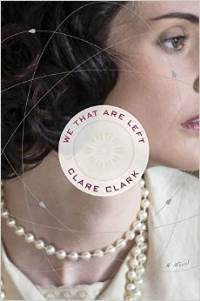
The two wealthy Melville sisters see their lives upended during WWI and try to establish new roots in the new, resulting world. Clark moves ahead into the trendy early 20th-century timeframe following a visit to colonial Louisiana with Savage Lands and Victorian London with Beautiful Lies . Houghton Mifflin Harcourt, October.
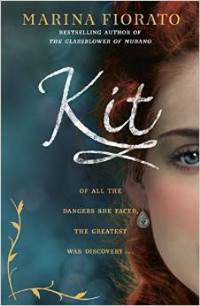
Marina Fiorato's earlier novels are set in historic Italy, and at first Kit, which opens in 18th-century Dublin, seems not to follow that pattern - but wait and see where Kit Kavanagh's adventures lead her. Daughter of Siena , which I reviewed a few years ago, centers on the Palio horse race in the 18th century. Hodder & Stoughton, July.
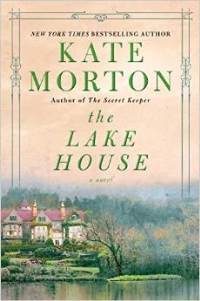
This is my most anticipated novel of the fall season. As one would expect from Kate Morton, it's a generational mystery filled with family secrets and suspense, this time surrounding a child's disappearance in Depression-era Cornwall and the repercussions decades later. For my earlier reviews of Morton's novels, see The Secret Keeper and The Distant Hours . Atria, October.
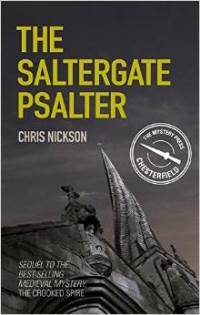
The market town of Chesterfield in Derbyshire may not be as high-profile as other locales Nickson's written about, like Seattle or Leeds, but I appreciate the chance to spend time in lesser-known places - especially when I've been there in real-life. Great title for this upcoming sequel to the medieval mystery The Crooked Spire , which I read on my way home from the UK last September. The Mystery Press, March 2016.
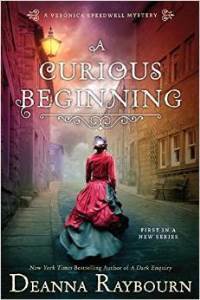
With her new release, Raybourn begins a new Victorian-era mystery series, this time featuring world traveler Veronica Speedwell, another of the adventurous historical heroines she's known for. I've previously reviewed Night of a Thousand Stars , set in the Middle East in the '20s, and interviewed her about her first Victorian mystery, Silent in the Grave , way back in 2007. NAL, September.

In the vein of her breakout novel The House at Tyneford , Solomons' latest focuses on family, music, and moving beyond grief and takes place on an English country estate in the '40s and half a century later. Plume, December.

The grandfather of Layla Roy from Patel's debut, Teatime for the Firefly , is the protagonist of Flame Tree Road, set in 1870s India. After seeing how his mother is shamefully treated after his father's death, Biren Roy decides to fight for a brighter future for women. I'll be reviewing this later on in the summer. MIRA, June.
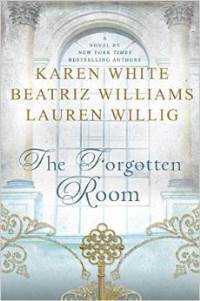
Three star authors team up for a mystery surrounding a Gilded Age mansion, a woman from an old portrait, and an expensive heirloom. Williams' The Secret Life of Violet Grant was reviewed here earlier, as was Willig's The Ashford Affair - and a review of Karen White's new book will be forthcoming. NAL, January 2016.

Secrets from a century ago are uncovered when a woman travels to Ireland, to go through the things her late uncle left behind in his lakeside cottage, and finds a manuscript written by a woman named Eliza Drury. The author's previous novel, Liberty Silk , was a multi-generational novel written with both style and warmth. Transworld Ireland, July.

After hearing Geraldine Brooks speak with the Washington Post's "totally hip book reviewer" Ron Charles at BEA, I've been eager to read her upcoming novel, focusing on the life of King David. An ARC appeared in my mail yesterday, and I'll be reading it shortly. I had reviewed her previous novel Caleb's Crossing for the Globe & Mail and reposted it here shortly thereafter. Viking, October.

The two wealthy Melville sisters see their lives upended during WWI and try to establish new roots in the new, resulting world. Clark moves ahead into the trendy early 20th-century timeframe following a visit to colonial Louisiana with Savage Lands and Victorian London with Beautiful Lies . Houghton Mifflin Harcourt, October.

Marina Fiorato's earlier novels are set in historic Italy, and at first Kit, which opens in 18th-century Dublin, seems not to follow that pattern - but wait and see where Kit Kavanagh's adventures lead her. Daughter of Siena , which I reviewed a few years ago, centers on the Palio horse race in the 18th century. Hodder & Stoughton, July.

This is my most anticipated novel of the fall season. As one would expect from Kate Morton, it's a generational mystery filled with family secrets and suspense, this time surrounding a child's disappearance in Depression-era Cornwall and the repercussions decades later. For my earlier reviews of Morton's novels, see The Secret Keeper and The Distant Hours . Atria, October.

The market town of Chesterfield in Derbyshire may not be as high-profile as other locales Nickson's written about, like Seattle or Leeds, but I appreciate the chance to spend time in lesser-known places - especially when I've been there in real-life. Great title for this upcoming sequel to the medieval mystery The Crooked Spire , which I read on my way home from the UK last September. The Mystery Press, March 2016.

With her new release, Raybourn begins a new Victorian-era mystery series, this time featuring world traveler Veronica Speedwell, another of the adventurous historical heroines she's known for. I've previously reviewed Night of a Thousand Stars , set in the Middle East in the '20s, and interviewed her about her first Victorian mystery, Silent in the Grave , way back in 2007. NAL, September.

In the vein of her breakout novel The House at Tyneford , Solomons' latest focuses on family, music, and moving beyond grief and takes place on an English country estate in the '40s and half a century later. Plume, December.

The grandfather of Layla Roy from Patel's debut, Teatime for the Firefly , is the protagonist of Flame Tree Road, set in 1870s India. After seeing how his mother is shamefully treated after his father's death, Biren Roy decides to fight for a brighter future for women. I'll be reviewing this later on in the summer. MIRA, June.

Three star authors team up for a mystery surrounding a Gilded Age mansion, a woman from an old portrait, and an expensive heirloom. Williams' The Secret Life of Violet Grant was reviewed here earlier, as was Willig's The Ashford Affair - and a review of Karen White's new book will be forthcoming. NAL, January 2016.
Published on June 19, 2015 17:00
June 16, 2015
A grand and dangerous adventure: Gill Paul's No Place for a Lady
The front lines of battle may seem to be no place for a lady, but it’s where two estranged sisters find new levels of maturity, see their strength tested to its limits, and develop new understandings of themselves and those they love.
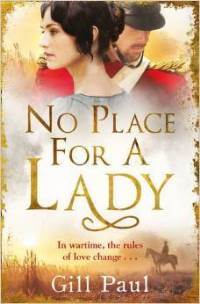 Gill Paul's latest novel takes place during the Crimean War, a conflict in which Britain, France, Sardinia, and Ottoman Turkey united to fight Russia over the latter’s imperial expansions in the mid-19th century. It’s a complex set of circumstances, which may be why it doesn’t feature much in fiction, but she does a good job explaining the historical background.
Gill Paul's latest novel takes place during the Crimean War, a conflict in which Britain, France, Sardinia, and Ottoman Turkey united to fight Russia over the latter’s imperial expansions in the mid-19th century. It’s a complex set of circumstances, which may be why it doesn’t feature much in fiction, but she does a good job explaining the historical background.
In London in 1854, Dorothea Gray is distraught when her younger sister Lucy, an outgoing 17-year-old with little experience of the world, marries Charlie Harvington after a short courtship. Although Charlie is a captain with the 8th Hussars – part of the Light Brigade – Dorothea does some checking around and learns his parents have disowned him, calling him a “scoundrel of low morals." Lucy, however, remains smitten with him.
Dorothea, at 31, is a talented volunteer nurse; bright and sensible, she’s clearly better cut out for a trek to the Crimean Peninsula than the sister she helped raise, their mother having died at Lucy's birth. However, it’s Lucy who heads there, with her new husband, just as war with the Russians is looming.
The narrative switches between the viewpoints of Dorothea, who hopes to join Florence Nightingale’s cadre of nurses in the Turkish lands and watch over Lucy there; and Lucy, who quickly learns that the conditions she’s forced to endure as an officer’s wife are hardly what she expects. Her naiveté is shown via the feather pillows and heirloom silk bedspread she brings along – they’re hopelessly impractical in the tents where she and Charlie set up camp.
Food supplies and warm uniforms are hard to come by during the harsh winter, which lowers morale and weakens the soldiers further. Lucy finds it hard to forgive Dorothea for trying to prevent her wedding but, with disease running rampant, needs her advice more than ever. Maybe it’s my age showing, but while I felt I was intended to see Dorothea as overbearing, as Lucy did, I admired her for being concerned about her sister's future.
This is a grand epic in the best sense: it has enormous sweep and scope but doesn’t neglect the smaller details of life during wartime or of travel through new, unfamiliar lands, from the mosques and minarets of Constantinople at sunset, the “black silhouettes against an orange sky,” to the Barracks Hospital in Scutari, with its terrible stench and primitive conditions.
The famous Miss Nightingale is on the scene, of course, extremely competent as she fearlessly takes charge, but her formidable presence and rigid rules mean she’s more beloved by her patients than her staff.
One minor distracting element involves an episode when Lucy disappears from view for a time. When her perspective is delayed, to increase the suspense about where she is and whether the sisters will ever reunite, the novel's rhythm feels a bit disrupted.
Regretfully, there aren’t many novels like this around anymore, and I might be tempted to call it old-fashioned for that reason, but the writing is brisk and fresh, and its enlightened multicultural perspective gives it contemporary resonance. There’s a good dose of romance, plenty of grit and realism, and unpredictable twists and turns – this isn’t the type of novel whose path is telegraphed from the beginning. Many new characters pass through the sisters’ lives along their journeys, and both are altered by their experiences.
All in all, it’s an exciting story recommended to readers in search of adventure, and who are prepared to travel wherever the novel may lead.
No Place for a Lady will be published on July 2nd in paperback by Avon UK (400pp, £7.99) and is currently available as an ebook (£0.99 or $1.99). Thanks to the author's publicist for sending me a pdf file as part of the blog tour.
 Gill Paul's latest novel takes place during the Crimean War, a conflict in which Britain, France, Sardinia, and Ottoman Turkey united to fight Russia over the latter’s imperial expansions in the mid-19th century. It’s a complex set of circumstances, which may be why it doesn’t feature much in fiction, but she does a good job explaining the historical background.
Gill Paul's latest novel takes place during the Crimean War, a conflict in which Britain, France, Sardinia, and Ottoman Turkey united to fight Russia over the latter’s imperial expansions in the mid-19th century. It’s a complex set of circumstances, which may be why it doesn’t feature much in fiction, but she does a good job explaining the historical background. In London in 1854, Dorothea Gray is distraught when her younger sister Lucy, an outgoing 17-year-old with little experience of the world, marries Charlie Harvington after a short courtship. Although Charlie is a captain with the 8th Hussars – part of the Light Brigade – Dorothea does some checking around and learns his parents have disowned him, calling him a “scoundrel of low morals." Lucy, however, remains smitten with him.
Dorothea, at 31, is a talented volunteer nurse; bright and sensible, she’s clearly better cut out for a trek to the Crimean Peninsula than the sister she helped raise, their mother having died at Lucy's birth. However, it’s Lucy who heads there, with her new husband, just as war with the Russians is looming.
The narrative switches between the viewpoints of Dorothea, who hopes to join Florence Nightingale’s cadre of nurses in the Turkish lands and watch over Lucy there; and Lucy, who quickly learns that the conditions she’s forced to endure as an officer’s wife are hardly what she expects. Her naiveté is shown via the feather pillows and heirloom silk bedspread she brings along – they’re hopelessly impractical in the tents where she and Charlie set up camp.
Food supplies and warm uniforms are hard to come by during the harsh winter, which lowers morale and weakens the soldiers further. Lucy finds it hard to forgive Dorothea for trying to prevent her wedding but, with disease running rampant, needs her advice more than ever. Maybe it’s my age showing, but while I felt I was intended to see Dorothea as overbearing, as Lucy did, I admired her for being concerned about her sister's future.
This is a grand epic in the best sense: it has enormous sweep and scope but doesn’t neglect the smaller details of life during wartime or of travel through new, unfamiliar lands, from the mosques and minarets of Constantinople at sunset, the “black silhouettes against an orange sky,” to the Barracks Hospital in Scutari, with its terrible stench and primitive conditions.
The famous Miss Nightingale is on the scene, of course, extremely competent as she fearlessly takes charge, but her formidable presence and rigid rules mean she’s more beloved by her patients than her staff.
One minor distracting element involves an episode when Lucy disappears from view for a time. When her perspective is delayed, to increase the suspense about where she is and whether the sisters will ever reunite, the novel's rhythm feels a bit disrupted.
Regretfully, there aren’t many novels like this around anymore, and I might be tempted to call it old-fashioned for that reason, but the writing is brisk and fresh, and its enlightened multicultural perspective gives it contemporary resonance. There’s a good dose of romance, plenty of grit and realism, and unpredictable twists and turns – this isn’t the type of novel whose path is telegraphed from the beginning. Many new characters pass through the sisters’ lives along their journeys, and both are altered by their experiences.
All in all, it’s an exciting story recommended to readers in search of adventure, and who are prepared to travel wherever the novel may lead.
No Place for a Lady will be published on July 2nd in paperback by Avon UK (400pp, £7.99) and is currently available as an ebook (£0.99 or $1.99). Thanks to the author's publicist for sending me a pdf file as part of the blog tour.
Published on June 16, 2015 05:00
June 11, 2015
Growing up royal: Chantal Thomas' The Exchange of Princesses
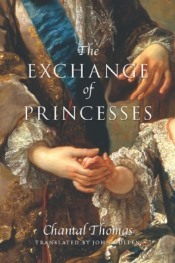 Best known for Farewell, My Queen (2003), an intimate glimpse of Marie Antoinette’s last days, Thomas has crafted a pointed and witty novel that sheds light on two eighteenth-century princesses trapped by familial obligations and the capricious whims of the court.
Best known for Farewell, My Queen (2003), an intimate glimpse of Marie Antoinette’s last days, Thomas has crafted a pointed and witty novel that sheds light on two eighteenth-century princesses trapped by familial obligations and the capricious whims of the court.On January 9, 1722, two cortèges unload and swap their passengers at Pheasant Island, a neutral point in the Pyrenees region. To ally their quarrelsome countries, 12-year-old Louise Élisabeth of Orléans, one of the many neglected daughters of France’s regent, will marry the Spanish heir, Luis, while Luis’ half-sister, Mariana Victoria, an adorable three-year-old who clings to her dolls, is sent to France to wed the adolescent Louis XV. “Could a more perfect symmetry be imagined?” Thomas ironically observes.
Writing in a formal style, she highlights the absurdity of royal ceremonies and the cruel circumstances that abandon these girls to their fates and deny them anything resembling a real childhood. Excerpts from authentic, little-known letters and documents add to the reading experience.
Chantal Thomas' The Exchange of Princesses, ably translated into English by John Cullen, will be published by Other Press in July ($16.95, trade pb, 336pp). This review first appeared in Booklist's June issue.
An additional note: I've read many novels about royalty (they're a special interest), so it's rare for me to pick up a work of royal fiction without knowing how it will end, but this particular episode was entirely new. If you haven't heard of it either, avoid Wikipedia before beginning!
Published on June 11, 2015 14:13
June 8, 2015
An early look at Landfalls by Naomi J. Williams, nautical adventure with a difference
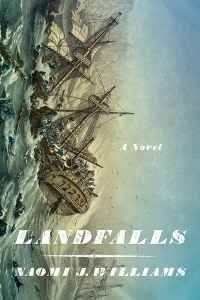 Tracing the movements of France’s ill-fated Lapérouse maritime expedition in the late eighteenth century, Williams’ exceptional debut isn’t your traditional seafaring yarn and is all the stronger and more penetrating for it.
Tracing the movements of France’s ill-fated Lapérouse maritime expedition in the late eighteenth century, Williams’ exceptional debut isn’t your traditional seafaring yarn and is all the stronger and more penetrating for it.The plot moves confidently between views of the changing landscape—from a crisply evoked Georgian London, where a naval engineer travels to procure supplies, and then on to Tenerife, Chile, Alaska, California, Russia, and the South Seas islands—and its characters’ choices and inner lives.
The emphasis is not on fast-paced drama so much as on interactions among the two ship’s captains (Lapérouse and Langle), their crews, the numerous scientists on board, and the residents and natives at many stopping points.
Williams’ status as an acclaimed short story writer is evident in her craftsmanship of each perfectly encapsulated chapter, each recounted from a different viewpoint or viewpoints. The section set at Monterey in 1786, for instance, demonstrates masterful use of perspective, as one revelation after another about the Spanish mission there comes to light.
Full of period sensibilities, particularly the Enlightenment-era urge to go forth and explore new domains, the novel is alternately charming, invigorating, and heartbreaking, and always thoughtful and humane. Even readers who don’t seek out nautical adventures will find themselves drawn in, especially if they love high-quality literary fiction.
Landfalls will be published in early August by Farrar Straus & Giroux ($26, hardcover, 336pp) and, in the UK, by Little Brown in October. This starred review first appeared in the April 15th issue of Booklist.
Some additional notes: This book was such a wonderful surprise! I'm not the natural audience for a lot of historical adventure fiction, as I often find myself wading through jargon that other readers of the subgenre seem to crave, and I've read plenty of round-the-world-exploration novels and wondered if this one would stand out. It absolutely did, and I'm grateful I got the chance to read it.
Published on June 08, 2015 10:00
June 3, 2015
A few notes on the historical novels at BEA 2015
I returned home from NYC on Saturday night and am still getting caught up. It was a very busy few days at BEA, a big contrast from my quiet university town during the summer.
Although I was thrown off balance by having to miss opening day (thanks to an allergic reaction to something I'd had the night before), I still managed to collect a decent number of historical ARCs. However, I took it pretty easy at the show, doing more sitting than networking, since I wasn't quite up to par by Thursday. Which means I didn't wait on many of the signing lines I intended to.
Instead, I spent a lot of time attending panels at the Uptown and Downtown stages and had a few meetings with publishers and publicists. Among the panels, I especially enjoyed "inside the mystery writer's studio" featuring five writers (all men!), including Brad Meltzer, whose new thriller The President's Shadow features an archivist and has a historical aspect to it. I've added it to my wishlist.
The historical novels I took back with me were a very diverse bunch, time- and setting-wise. Some are for me, and others will be sent out for review for the Historical Novels Review (I attended BEA as a member of the press, representing HNR).
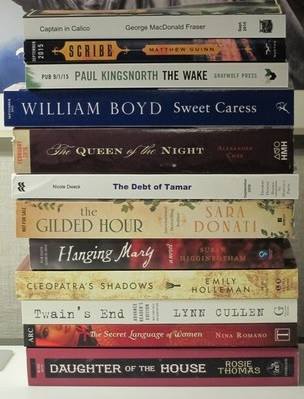
Sourcebooks is putting a lot of effort into promoting Susan Higginbotham's Hanging Mary, which isn't out until next spring; it's the first US-set novel from an author better known for writing about medieval and Renaissance English history.
Captain in Calico, at the very top, is George MacDonald Fraser's first and previously unpublished novel, a pirate adventure about Captain Jack Rackham in the 18th-century Caribbean.
I started reading Emily Holleman's Cleopatra's Shadows on the plane home and regretfully had to set it aside temporarily since I have two other reviews due next week. It has two viewpoint characters: Arsinoe and Berenice, both siblings to Cleopatra whose stories are comparatively little-known.
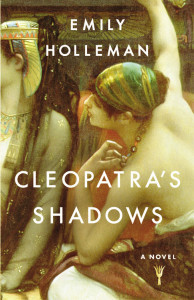
I also like what they did with the cover art: like the book itself, it takes a familiar subject and looks at it from a new perspective. The original painting has graced many covers, including the one below, but with Cleopatra always at the center. The Holleman cover shifts the view slightly.
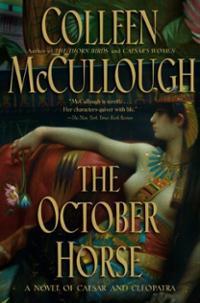
And below, the second pile of historical fiction. Two are speculative literary time-slips dealing with past lives, Susan Barker's The Incarnations and Gwendolyn Womack's The Memory Painter. Check out the book trailer for the latter; it's fantastic and does exactly what a trailer should do. It's beautifully filmed, moves quickly, and piqued my interest in the book.
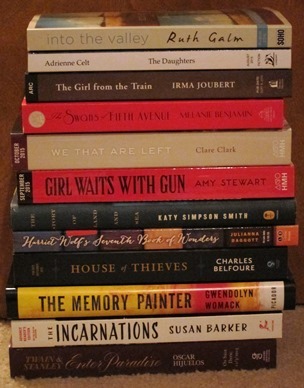
One title that's missing: Geraldine Brooks' The Secret Chord, as I didn't have the stamina to wait in an hour-long signing line. I did, however, attend the discussion she had with Washington Post book reviewer Ron Charles at one of the BEA stages, and it was great, with insight into how she decided on and researched her upcoming novel of King David.
Look for reviews of many of the above titles later in 2015 or early in 2016.
Which fall books are you looking forward to the most?
Although I was thrown off balance by having to miss opening day (thanks to an allergic reaction to something I'd had the night before), I still managed to collect a decent number of historical ARCs. However, I took it pretty easy at the show, doing more sitting than networking, since I wasn't quite up to par by Thursday. Which means I didn't wait on many of the signing lines I intended to.
Instead, I spent a lot of time attending panels at the Uptown and Downtown stages and had a few meetings with publishers and publicists. Among the panels, I especially enjoyed "inside the mystery writer's studio" featuring five writers (all men!), including Brad Meltzer, whose new thriller The President's Shadow features an archivist and has a historical aspect to it. I've added it to my wishlist.
The historical novels I took back with me were a very diverse bunch, time- and setting-wise. Some are for me, and others will be sent out for review for the Historical Novels Review (I attended BEA as a member of the press, representing HNR).

Sourcebooks is putting a lot of effort into promoting Susan Higginbotham's Hanging Mary, which isn't out until next spring; it's the first US-set novel from an author better known for writing about medieval and Renaissance English history.
Captain in Calico, at the very top, is George MacDonald Fraser's first and previously unpublished novel, a pirate adventure about Captain Jack Rackham in the 18th-century Caribbean.
I started reading Emily Holleman's Cleopatra's Shadows on the plane home and regretfully had to set it aside temporarily since I have two other reviews due next week. It has two viewpoint characters: Arsinoe and Berenice, both siblings to Cleopatra whose stories are comparatively little-known.

I also like what they did with the cover art: like the book itself, it takes a familiar subject and looks at it from a new perspective. The original painting has graced many covers, including the one below, but with Cleopatra always at the center. The Holleman cover shifts the view slightly.

And below, the second pile of historical fiction. Two are speculative literary time-slips dealing with past lives, Susan Barker's The Incarnations and Gwendolyn Womack's The Memory Painter. Check out the book trailer for the latter; it's fantastic and does exactly what a trailer should do. It's beautifully filmed, moves quickly, and piqued my interest in the book.

One title that's missing: Geraldine Brooks' The Secret Chord, as I didn't have the stamina to wait in an hour-long signing line. I did, however, attend the discussion she had with Washington Post book reviewer Ron Charles at one of the BEA stages, and it was great, with insight into how she decided on and researched her upcoming novel of King David.
Look for reviews of many of the above titles later in 2015 or early in 2016.
Which fall books are you looking forward to the most?
Published on June 03, 2015 16:00
June 1, 2015
Family, drama, revolution: Freda Lightfoot's The Amber Keeper
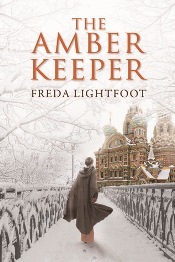 Best known for her sagas of historical British life, Lightfoot’s newest release fits with the popular dual-narratives trend, in which family secrets from an earlier generation spill forth in a later era with dramatic results. Here the plot centers on the surprising suicide of Abbie Myers’ mother, Kate, and how it relates to the time Abbie’s adored grandmother, Millie, spent in Russia in the early 20th century.
Best known for her sagas of historical British life, Lightfoot’s newest release fits with the popular dual-narratives trend, in which family secrets from an earlier generation spill forth in a later era with dramatic results. Here the plot centers on the surprising suicide of Abbie Myers’ mother, Kate, and how it relates to the time Abbie’s adored grandmother, Millie, spent in Russia in the early 20th century. In 1963, Abbie returns home to the Lake District from Paris after splitting with her married lover. Most of Abbie’s family, a truly sour bunch, blames her for Kate’s death, claiming that Abbie and her illegitimate daughter made Kate feel ashamed and despondent. Abbie doesn’t buy it, though, and turns to Millie for answers. As Abbie attempts to revitalize the family’s jewelry business, one revelation follows another as Millie speaks about her years as governess to an aristocratic Russian family.
The easy prose style draws one in immediately, and the setting of the early segments offers much promise: glittering St. Petersburg during the lead-up to the Bolshevik Revolution. However, the story is let down by over-the-top characters whose rapid emotional about-faces are hard to tolerate. Abbie puts up with terrible treatment from her father, brother, and ex and veers between telling them off and forgiving them. Countess Olga, Millie’s employer, is the epitome of cruelty and selfishness, although guessing what she’ll do next provides some entertainment.
The mystery surrounding Millie’s adoption of the young Kate from a London orphanage, and how a piece of rare amber came to be found in Kate’s belongings, pulls the two story strands together well, but more subtlety in the telling would have gone a long way.
The Amber Keeper was published by Amazon's Lake Union imprint in late 2014 in trade paperback ($14.95, 384pp) and ebook (currently $1.99). This review first appeared in May's Historical Novels Review.
Published on June 01, 2015 10:46
May 24, 2015
The Blue Mile by Kim Kelly: Love and social change in Depression-era Sydney
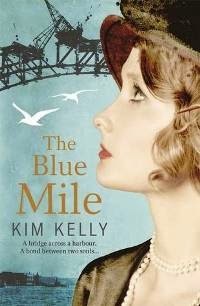 The third novel from Australian writer Kelly (aka book editor Kim Swivel), set in Depression-era Sydney, excels at depicting the era’s social conditions and the swoony exuberance and thorny complications of cross-class romance. The story unfolds through the internal musings of Irish-born Catholic Eoghan O’Keenan, recently let go from his factory job, and ambitious designer Olivia Greene, daughter of a viscount who abandoned her and her mother.
The third novel from Australian writer Kelly (aka book editor Kim Swivel), set in Depression-era Sydney, excels at depicting the era’s social conditions and the swoony exuberance and thorny complications of cross-class romance. The story unfolds through the internal musings of Irish-born Catholic Eoghan O’Keenan, recently let go from his factory job, and ambitious designer Olivia Greene, daughter of a viscount who abandoned her and her mother. After Eoghan (“Yo”) flees the grime and alcoholism of the slums with his seven-year-old sister, Agnes, he encounters Olivia by chance in the Royal Botanic Gardens. Although there’s an instantaneous mutual attraction, their relationship progresses at a realistically sedate pace. They remain separated for long periods, while Olivia attracts new clientele to her and her mother’s couturier business and Eoghan takes a dangerous job catching rivets 300 feet above water during the construction of the Sydney Harbour Bridge.
The stream-of-consciousness style takes getting used to, for Olivia in particular. Her unfiltered thoughts, full of energy and interjections, follow wherever her mind rambles. The couple’s viewpoints and vocabularies reflect their personalities, though. Both are caring people, and the narrative technique makes their sentiments toward one another feel startlingly real and honest.
The historical setting, presented clearly, plays a significant role. With Britain demanding repayment of Australia’s war debts, unemployment runs high, and there are growing pockets of civil unrest. The “blue mile” of the title refers to the overcrowded waterway dividing the city and the immense distances in faith and class separating Eoghan and Olivia. The Sydney Harbour Bridge’s massive arch, its two halves joining together at last in 1932, becomes a symbol of hope, but both the city and couple undergo significant strain before they can move forward. All of the details on the broader social context enhance the telling of a beautiful love story.
The Blue Mile was published by Macmillan Australia in 2014 (trade pb, A$29.99, 464pp). I had picked it up as a Kindle copy, which is currently for sale at US$9.99. This review first appeared in May's Historical Novels Review and is my third entry for the Australian Women Writers Challenge.
Published on May 24, 2015 10:52
May 20, 2015
A gallery of new & upcoming historical novels from Canada
This latest gallery (see the tag Visual Previews for more) covers a dozen new and upcoming historical novels from Canadian publishers. The novels themselves are set all over the place: Canada, certainly, in the 19th and 20th centuries, but also 16th-century Istanbul, medieval Scotland, WWII France, and colonial America.
As an American reader, I often find it difficult to find new HF offerings from Canada; they're hard to track down through online bookstore listings. I discovered a few of these through the authors' social media posts, and others through newspaper reviews, browsing publishers' catalogs, or because of my work with the Historical Novels Review. I welcome suggestions for other books in the comments.
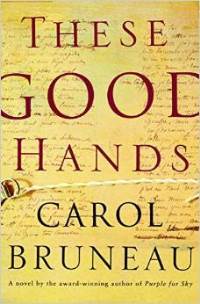
The life story of Camille Claudel, sculptor and mistress of Rodin, intertwines with that of the nurse who cares for her in France's Montdevergues Asylum in 1943. Cormorant, May 2015.
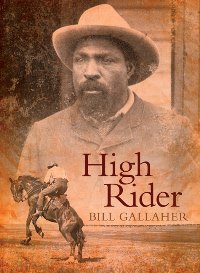
This literary cowboy novel tells the adventures of John Ware (1845–1905), a former slave from South Carolina who established a successful ranch in southern Alberta. TouchWood Editions, May 2015.
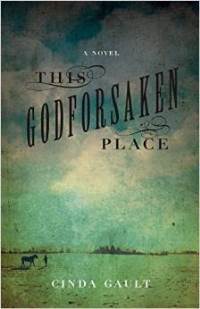
"But then she buys a rifle, and everything changes." The tale of the intrepid Abigail Peacock and her adventures (and those of other Western notables) in the late 19th-century Canadian and American West. I'll be reading it shortly. Brindle & Glass, June 2015.
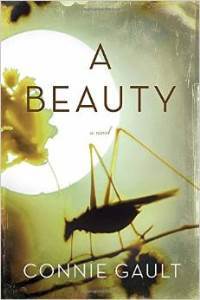
A literary novel of freedom and re-invention, centering on a young Finnish woman who takes a road trip across the Canadian prairie in the '30s with a stranger she meets at a dance. McClelland & Stewart, Feb 2015.
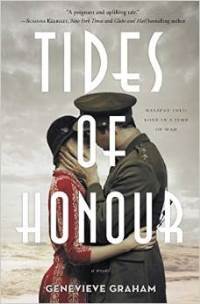
An epic love story between a soldier from Nova Scotia and a young Frenchwoman during WWI, set in the French countryside and in Halifax. Simon & Schuster Canada, April 2015.
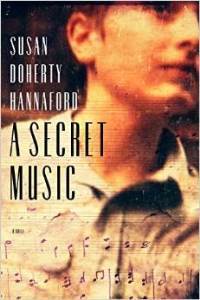
A young piano prodigy's coming of age, and the redemptive power of music, set in Depression-era Montreal. Cormorant, May 2015.
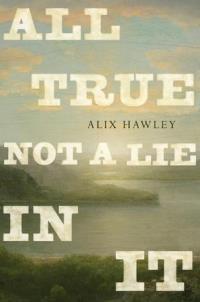
A literary tall tale exploring the full-bodied life of Daniel Boone, set during the American Revolution. Love the title. Knopf Canada, Feb 2015.
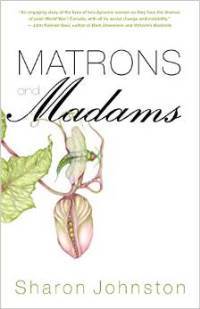
A British war widow and a Nova Scotian schoolteacher unexpectedly join forces in post-WWI Alberta to help combat the spread of VD in the province. The author is the wife of Canada's Governor General. Dundurn, April 2014.
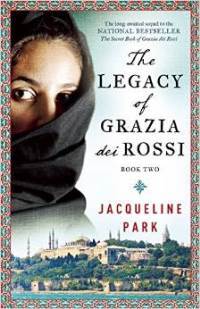
This sequel to the bestselling The Secret Book of Grazia dei Rossi is a story of faith and forbidden love set in the 16th-century Ottoman Empire. Aged 89 when her latest was published, Park is currently writing volume three. House of Anansi, October 2014.
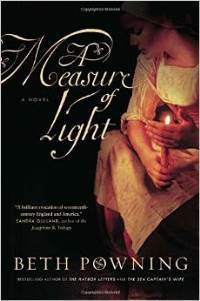
For her latest work of literary fiction, Powning ( The Sea Captain's Wife , reviewed here in 2011) turns to the story of English-born Mary Dyer, who traveled to America in the 1630s and found the Puritan church of the Massachusetts Bay Colony horrifically intolerant. Knopf Canada, April 2015.
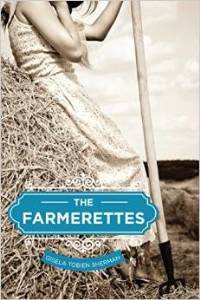
The "farmerettes" are six young woman, recent high school grads, who form bonds, find love, and face heartbreak as they work together on a family farm, taking the place of men off fighting overseas during the summer of 1943. A YA novel. Second Story, April 2015.
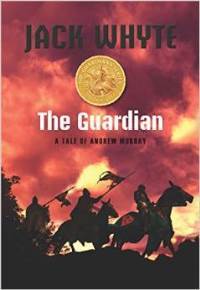
Somehow I missed that Jack Whyte had a new book out. This newest in his Scottish series is subtitled "a tale of Andrew Murray," a military leader who became a Guardian of Scotland. Viking Canada, November 2014.
As an American reader, I often find it difficult to find new HF offerings from Canada; they're hard to track down through online bookstore listings. I discovered a few of these through the authors' social media posts, and others through newspaper reviews, browsing publishers' catalogs, or because of my work with the Historical Novels Review. I welcome suggestions for other books in the comments.

The life story of Camille Claudel, sculptor and mistress of Rodin, intertwines with that of the nurse who cares for her in France's Montdevergues Asylum in 1943. Cormorant, May 2015.

This literary cowboy novel tells the adventures of John Ware (1845–1905), a former slave from South Carolina who established a successful ranch in southern Alberta. TouchWood Editions, May 2015.

"But then she buys a rifle, and everything changes." The tale of the intrepid Abigail Peacock and her adventures (and those of other Western notables) in the late 19th-century Canadian and American West. I'll be reading it shortly. Brindle & Glass, June 2015.

A literary novel of freedom and re-invention, centering on a young Finnish woman who takes a road trip across the Canadian prairie in the '30s with a stranger she meets at a dance. McClelland & Stewart, Feb 2015.

An epic love story between a soldier from Nova Scotia and a young Frenchwoman during WWI, set in the French countryside and in Halifax. Simon & Schuster Canada, April 2015.

A young piano prodigy's coming of age, and the redemptive power of music, set in Depression-era Montreal. Cormorant, May 2015.

A literary tall tale exploring the full-bodied life of Daniel Boone, set during the American Revolution. Love the title. Knopf Canada, Feb 2015.

A British war widow and a Nova Scotian schoolteacher unexpectedly join forces in post-WWI Alberta to help combat the spread of VD in the province. The author is the wife of Canada's Governor General. Dundurn, April 2014.

This sequel to the bestselling The Secret Book of Grazia dei Rossi is a story of faith and forbidden love set in the 16th-century Ottoman Empire. Aged 89 when her latest was published, Park is currently writing volume three. House of Anansi, October 2014.

For her latest work of literary fiction, Powning ( The Sea Captain's Wife , reviewed here in 2011) turns to the story of English-born Mary Dyer, who traveled to America in the 1630s and found the Puritan church of the Massachusetts Bay Colony horrifically intolerant. Knopf Canada, April 2015.

The "farmerettes" are six young woman, recent high school grads, who form bonds, find love, and face heartbreak as they work together on a family farm, taking the place of men off fighting overseas during the summer of 1943. A YA novel. Second Story, April 2015.

Somehow I missed that Jack Whyte had a new book out. This newest in his Scottish series is subtitled "a tale of Andrew Murray," a military leader who became a Guardian of Scotland. Viking Canada, November 2014.
Published on May 20, 2015 11:00
May 17, 2015
Dissolution, faith, and love: Roses in the Tempest by Jeri Westerson
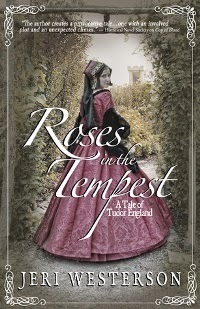 Isabella Launder is a yeoman farmer's daughter living in a Staffordshire village in 1515. A tall, plain woman who strikes up a close friendship with Thomas Giffard, the son of her father's overlord, Isabella makes the surprising decision to join a nunnery rather than be forced to marry someone else. As a novice, holy sister, and finally prioress of Blackladies, she finds joy in caring for the convent's roses as well as a new kind of family life, though she never forgets Thomas, nor he her.
Isabella Launder is a yeoman farmer's daughter living in a Staffordshire village in 1515. A tall, plain woman who strikes up a close friendship with Thomas Giffard, the son of her father's overlord, Isabella makes the surprising decision to join a nunnery rather than be forced to marry someone else. As a novice, holy sister, and finally prioress of Blackladies, she finds joy in caring for the convent's roses as well as a new kind of family life, though she never forgets Thomas, nor he her.True to their era and their class, both are refreshingly honest about why a marriage between them would never have worked. Still, their love for one another – strong, unreciprocated at first, always chaste – endures over the years, through Thomas' troubled marriage to an heiress; Isabella's adjustment to convent life, including the envy and abrasiveness of a fellow nun; and Henry VIII's decision to proclaim himself head of the church. Repercussions from the latter bring even an inconspicuous, poor convent like Blackladies to the notice of the king and his greedy advisers.
Told in the alternating voices of Thomas and Isabella, Roses in the Tempest is decidedly different fare from Jeri Westerson's previous release, Cup of Blood, a fast-moving and suspenseful medieval mystery with a sexy outcast hero and plenty of witty banter. However, while less action-oriented, it's just as engaging, and the contrast in styles demonstrates her versatility as a writer.
In keeping with his family's position, Thomas is often at court, while Isabella remains enclosed within her small priory. The changing scenes provide a varied view of Tudor life. Both protagonists show wonderful growth over time, and unlike many other novels set in the period, they come to share a deep-rooted and abiding faith, one that refuses to be dislodged on a king's whims. This isn't inspirational fiction, but the prose has a spiritual richness that meshes perfectly with their outlook on the world. Here is Isabella:
"Raising my head to inhale the remnants of summer, the bells sounded again. Listening, I reflected on their timbre, how they called each of us to that quiet house of God's, and even how they were part of the landscape, like a tree or a fence. How natural they were to the environment, as natural as I in my garden."
Westerson states up front that the relationship she posits between Isabella and Thomas is fictional, although the larger historical events are true, and all of the characters once existed. According to the introduction, the novel was first written 14 years ago, before her mystery-writing career began. If she has others like it sitting in a dusty old drawer, let's hope they'll also be pulled out and released.
Roses in the Tempest was published in April by Old London Press ($13.99 pb / $5.99 ebook, 280pp). This was a personal purchase.
Published on May 17, 2015 08:30



